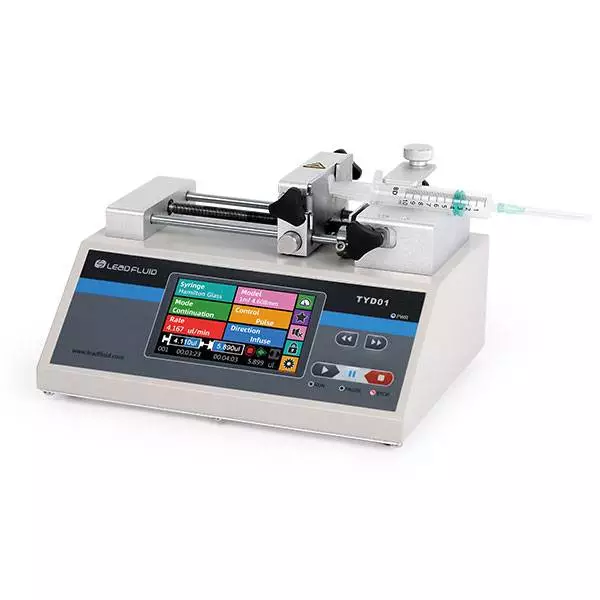Large volume peristaltic pumps find applications in various industries and scenarios where there is a need to pump or transfer fluids in significant quantities.
Here are some specific areas where large volume peristaltic pumps are commonly utilized include:
- Industrial Processing: Large volume peristaltic pumps are extensively used in industrial processes that involve the transfer, dosing, or circulation of fluids. They are employed in chemical manufacturing, mining operations, water treatment plants, food and beverage production, and other industries that require the movement of fluids in large volumes.
- Mining and Slurry Handling: Peristaltic pumps are well-suited for handling abrasive and viscous fluids, making them ideal for mining applications. Large volume peristaltic pumps are used to transport slurries, mine tailings, and other materials encountered in mining operations.
- Environmental and Remediation Projects: Peristaltic pumps are commonly employed in environmental applications where the transfer or extraction of fluids is required. They are used for pumping contaminated water, sludge, and other fluids during remediation projects, groundwater monitoring, and soil treatment processes.
- Biopharmaceutical Manufacturing: Large volume peristaltic pumps are utilized in the biopharmaceutical industry for transferring and processing large quantities of cell cultures, media, buffers, and other process fluids. They are often employed in bioreactors, filtration systems, and chromatography columns.
- Municipal Water and Wastewater Treatment: Peristaltic pumps are used in municipal water treatment plants and wastewater treatment facilities for dosing and transferring chemicals, such as disinfectants, coagulants, and pH adjusters, in large volumes. They are also utilized for sludge dewatering and polymer dosing applications.
- Agriculture and Irrigation: Large volume peristaltic pumps find applications in agricultural settings for pumping fertilizers, pesticides, and other agricultural chemicals. They are also used for irrigation systems to transfer water in large volumes to fields or crops.
- Construction and Dewatering: Peristaltic pumps are employed in construction projects for dewatering excavations, handling slurry, and managing groundwater. Large volume peristaltic pumps can handle high flow rates, making them suitable for construction and civil engineering applications.
These are just a few examples of where large volume peristaltic pumps are commonly applied. Their ability to handle wide-ranging fluids, high volume peristaltic pump gentle pumping action, and flexibility in flow rate control make them suitable for various industries and situations that require the transfer or circulation of fluids in significant quantities.
When it comes to high-capacity peristaltic pumps, here’s more information:
- High volume handling: High volume peristaltic pumps are designed to handle large amounts of fluid. They typically have larger line diameters and more powerful motors to support high flow requirements. This makes them suitable for industrial and commercial applications where large volumes of fluids need to be handled.
- High pressure applications: Large capacity peristaltic pumps are usually able to provide higher working pressures. This makes them ideal for applications where fluids need to be pushed through long distance pipes or overcome resistance, such as long distance delivery, high pressure injection, or high pressure perfusion.
- Corrosion and wear resistance: Many high-capacity peristaltic pumps use materials that are resistant to corrosion and wear to meet the challenges of handling corrosive fluids or fluids containing solid particles. These materials can include special rubbers or polymers, as well as metal alloys with corrosion resistance.
- Self-priming capacity: High-volume peristaltic pumps usually have good self-priming capacity, that is, they are able to draw liquid from a lower level without additional guidance or diversion of water. This makes them useful in applications where groundwater needs to be treated or where fluid needs to be pumped from low levels.
- Easy maintenance: Peristaltic pumps are usually built with a modular design that makes maintenance and parts replacement relatively easy. High-volume peristaltic pumps typically have easily accessible lines and pump heads, making it easy for maintenance personnel to clean, replace lines, and repair.
- Programmable control: Some advanced high-volume peristaltic pumps are equipped with programmable control functions that can be automatically controlled and integrated through external interfaces or control software. This enables the high capacity peristaltic pump to be seamlessly integrated with other equipment and systems for complex process control and data logging.
- Wide range of applications: large capacity peristaltic pumps are widely used in many industries. They are used in industrial processes, water treatment, mining, oil and gas, chemical manufacturing, agriculture, construction engineering and other fields. They are suitable for applications that require the handling of large volumes of fluids, corrosion resistance and wear resistance.
These features of high-capacity peristaltic pumps make them ideal for applications where large volumes of fluid need to be handled. They offer high flow rates, reliability, durability and precise control for fluid handling needs in a variety of industrial and commercial sectors.
